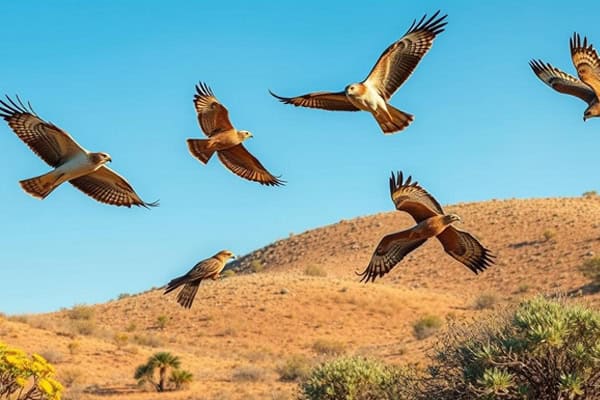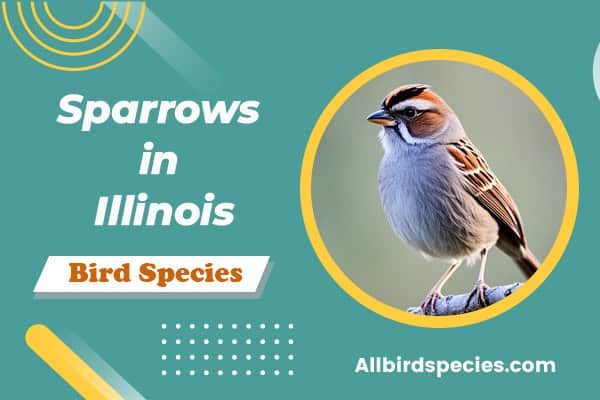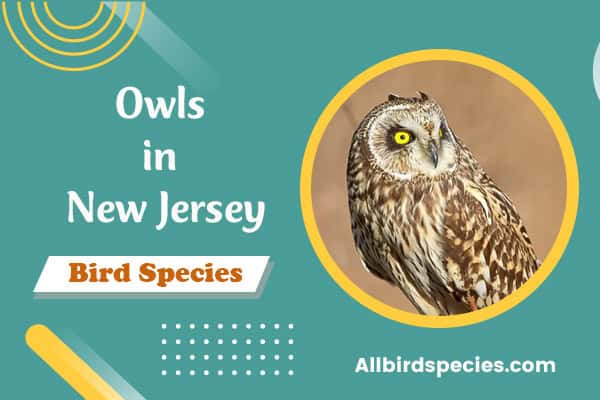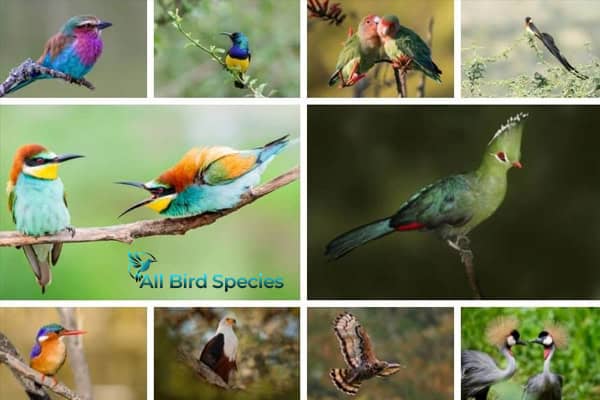Top 7 Woodpeckers that live in Iowa (With Photos)
Iowa is home to over 30 species of woodpeckers, making it a paradise for bird lovers. We’ll look at the top seven woodpecker species found in Iowa. These birds come in various colors and sizes and are crucial to our ecosystems.
Woodpeckers are known for their drumming sounds in the woods. They search for insects and make homes in our forests. Let’s dive into their unique traits, diets, and how we can help protect them. We’ll also share beautiful photos to help you get to know these Iowa bird species better.
Common Woodpeckers in Iowa
| Woodpecker Species | Habitat Preference | Feeding Behavior |
|---|---|---|
| Red-Headed Woodpecker | Open woodlands, parks | Bores into trees |
| Red-Bellied Woodpecker | Deciduous forests | Drills for insects |
| Pileated Woodpecker | Mature forests | Larger holes for food |
| Downy Woodpecker | Lots and backyards | Pecks small holes |
| Hairy Woodpecker | Mixed forests | Similar to Downy |
| Northern Flicker | Open areas, grasslands | Forages on the ground |
1. Red-Headed Woodpecker
- Scientific name: Melanerpes erythrocephalus
- Life span: 8 – 10 years
- Size: 7.5 to 9.8 in
- Weight: 2.0 to 3.4 oz
- Wingspan: 14 to 17 in
The Red-headed Woodpecker is a standout in Iowa’s skies. Its bright red head, white belly, and black wings make it easy to spot. Knowing how to identify these birds is key for bird lovers, as they embody the beauty of Iowa’s woodpeckers.

Identification and Characteristics
Red-headed Woodpeckers are about 7.5 to 9.8 inches long and have a wingspan of 14 to 17 inches. Their striking look makes them a hit with bird watchers. It’s easy to recognize them when you’re out in nature.
Diet and Feeding Habits
These woodpeckers are versatile in how they find food. They catch insects in mid-air and also search for fruits, nuts, and seeds on the ground. Their ability to adapt to different food sources shows how important they are to their ecosystems.
Conservation Efforts
Working to save the Red-headed Woodpecker involves restoring their habitats and getting the community involved. They need open woodlands and savannas to survive. With everyone’s help, we can make sure these birds continue to thrive.
2. Red-Bellied Woodpecker
- Scientific name: Melanerpes carolinus
- Life span: 10-12 years
- Size: 9 to 10 in
- Weight: 2 to 3.2 oz
- Wingspan: 14 to 17 in
The Red-bellied Woodpecker is known for its unique look and ability to live in different places. It has features that set it apart from other woodpeckers. These details make it stand out in its range.
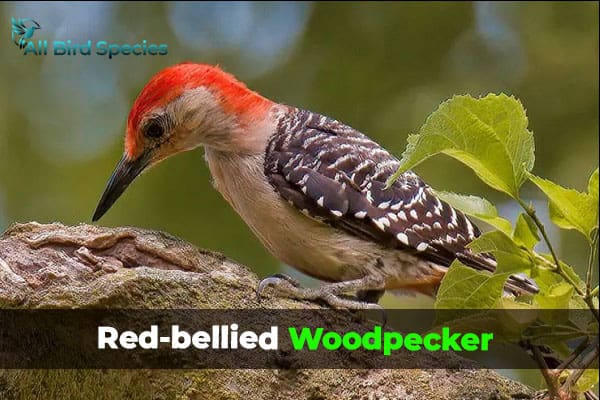
Recognizable Features and Range
This woodpecker is easy to spot with its pale gray face and faint red belly. It’s about 9 to 10 inches tall and has a wingspan similar to the Red-headed Woodpecker. Its looks make it a joy to see in many places. The Red-bellied Woodpecker lives in the eastern and central United States. It loves wooded areas, including cities and parks, where people can easily watch them.
Diet and Foraging Techniques
Red-bellied Woodpeckers eat a wide variety of foods like insects, fruits, and nuts. They show how they adjust to their environment through their eating habits. They search for insects on trees and are also great at using bird feeders in cities. This lets us bring these lovely birds to our yards and watch them eat.
| Feature | Details |
|---|---|
| Height | 9-10 inches |
| Wingspan | Similar to Red-headed Woodpecker |
| Diet | Similar to the Red-headed Woodpecker |
| Common Feeding Habits | Using bird feeders, foraging on trees |
Woodpeckers in other Regions:
| Woodpeckers in California |
| Woodpeckers in Wisconsin |
| Woodpeckers in Missouri |
| Woodpeckers in Montana |
| Woodpeckers of Indiana |
3. Pileated Woodpecker
- Scientific name: Dryocopus pileatus
- Life span: 6-10 years
- Size: 16-19 inches
- Weight: 10-12 oz
- Wingspan: 26-30 inches
The Pileated Woodpeckers in Lowa stands out as a remarkable bird. It’s the largest woodpecker in North America, catching the eye of bird lovers and nature fans. Measuring 16 to 19 inches, its size is hard to miss. Its black body, white stripes, and red crest make spotting it a fun challenge.
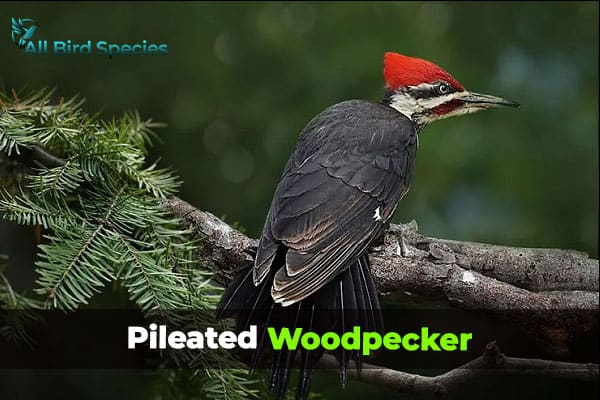
Physical Characteristics
These birds have a wingspan of 26 to 30 inches, showing off their power in flight. Their striking look and size make them stand out. Their strong bills are perfect for digging into trees to find ants and beetles.
Nesting and Ecological Role
They make big holes in old trees, which become homes for other animals later. Their nests help Iowa’s forests by supporting many species. By eating insects and making nests, they help forests grow and stay healthy.
Related Video:
| Characteristic | Description |
|---|---|
| Average Size | 16 to 19 inches |
| Wingspan | 26 to 30 inches |
| Primary Diet | Ants and beetles |
| Nesting Habitats | Cavities in decaying trees |
| Ecological Role | Provides homes for other species |
4. Downy Woodpecker
- Scientific name: Picoides pubescens
- Life span: 2-5 years
- Size: 6-7 inches
- Weight: 1 oz
- Wingspan: 13 inches
The Downy Woodpeckers are the smallest woodpecker in Iowa, measuring 6 to 7 inches long. Its black-and-white pattern is a joy to see at bird feeders and gardens. We often see this Iowa woodpecker in both country and city areas because it’s friendly and can live in many places.
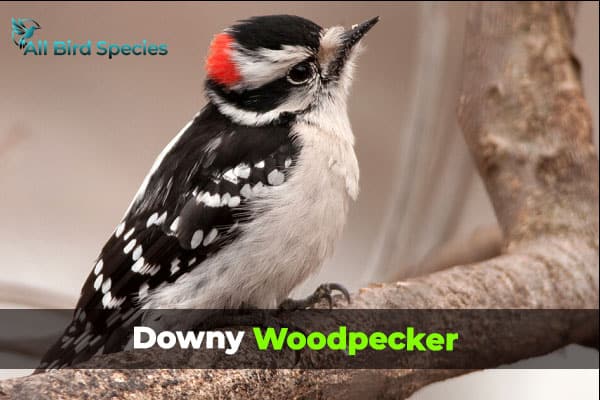
These woodpeckers live in trees that lose their leaves, where they look for insects and larvae. They can stick to different surfaces while eating, which is amazing to watch. They peck at tree bark, showing off the unique traits of the Downy Woodpecker.
Because they’re common in backyards, Downy Woodpeckers are loved by birdwatchers. They visit suet feeders, letting us get a good look at their behavior. These small woodpeckers are important to our local ecosystems and bring happiness to those who love wildlife.
5. Hairy Woodpecker
- Scientific name: Picoides villosus
- Life span: 5-10 years
- Size: 7-10 inches
- Weight: 1.5 oz
- Wingspan: 16-20 inches
The Hairy Woodpecker is a bird that catches our eye with its unique look. It looks a lot like the Downy Woodpecker but is bigger and has a longer bill. Knowing how to spot a Hairy Woodpecker is key for bird lovers.

Distinguishing Traits
Hairy Woodpeckers have a classic look with black and white feathers. They have big bodies and long tails, making them move through trees easily. Males have a small red spot on their heads, which helps tell them apart from Downy Woodpeckers.
Foraging Behavior
Hairy Woodpeckers look for insects that live inside trees in many types of forests. They use their strong beaks to peck at tree bark to find food. This shows how well they can adapt and hunt in their environment.
| Feature | Description |
|---|---|
| Size | Medium-sized woodpecker, larger than Downy |
| Bill Length | Longer bill compared to Downy Woodpecker |
| Plumage | Black and white with a male red crown patch |
| Habitat | Found in both coniferous and deciduous forests |
| Diet | Primarily wood-boring insects |
| Foraging Technique | Pecking on tree bark |
6. Northern Flicker
- Scientific name: Colaptes auratus
- Life span: 5-8 years
- Size: 8-10 inches
- Weight: 2.5 oz
- Wingspan: 14-16 inches
The Northern Flicker is a standout among woodpeckers with its bright colors and special way of finding food in Iowa. Unlike many others, it often searches for food on the ground instead of in trees. This lets it eat mainly ants and beetles, showing how it’s different from other woodpeckers.

This bird catches the eye with its black crescent on the chest and a unique spotted pattern on its body. Birdwatchers and photographers love it for these features. While foraging, it uses its long, barbed tongue to pull insects out of the ground. This shows how it has adapted to a special way of eating.
Seeing these birds is a treat, especially in Iowa where they’re common. Their loud calls fill the woods, making outdoor time more enjoyable. We suggest keeping an eye out for these special woodpeckers and understanding their important role in nature.
| Feature | Details |
|---|---|
| Coloration | Distinctive black crescent on the chest, spotted belly |
| Foraging Behavior | Ground forager primarily seek ants and beetles |
| Habitat | Prefers open woodlands, parks, and gardens |
| Call | Unique high-pitched calls |
| Diet | Insects, especially ants, and beetles |
Where to spot for Woodpeckers in Iowa
- Deciduous forests: Areas with a mix of hardwood trees like oak, maple, and hickory.
- Wooded edges and riparian zones: The edges of forests near water bodies.
- Old, mature trees: Trees with dead or decaying wood, which provide excellent feeding and nesting sites.
- Parks and nature reserves: These areas often have suitable woodpecker habitats.
- Urban areas: Large, mature trees in parks and residential areas can also attract woodpeckers.
Woodpeckers are also more active in the early morning and late afternoon, making these times ideal for spotting them.
Check Our Previous Articles:
| Hummingbirds in Georgia |
| Owls in Oklahoma |
| Black Birds In Florida |
| Hawks in New Jersey |
| Rodrigues Solitaire |
Conclusion
woodpeckers in Iowa are key to the state’s bird life. Each species is crucial for keeping our forests and ecosystems healthy. From the bright Red-Headed Woodpecker to the Downy Woodpecker, they boost biodiversity and delight birdwatchers and nature lovers.
These birds fascinate us with their unique behaviors and looks. They remind us of the beauty around us. It’s important to understand the challenges they face in their homes.


